On a grey, drizzly spring day, when a keen breeze is whipping the surface of a lake, you might spot dark arrowheads zoom over the water – sand martins. Though it may not feel like it, spring is here!
Britain’s other earliest arrivals are usually chiffchaffs in willow scrub and treetops, and wheatears on coastal grassland. All three migratory species turn up here from the first week of March.
Sandwich terns and little ringed plovers are widespread by the second half of the month, also a good time to scan shallow pools for garganey. Towards the end of March, ring ouzels, fresh in from the North African mountains, appear on wind-scoured hilltops.
But not all our bird migrants are from outside the UK. Waders that wintered on our coasts now move inland to their breeding grounds. As upland moors, fells and pastures thaw, they unleash a bounty of worms and insect larvae.
Soon the air rings with the calls of returning oystercatchers, curlews, redshanks and golden plovers. Meadow pipits are on the move too, leaving coastal areas and lowlands to head back to moors and mountains to breed.
All illustrations by Mike Langman
Sand martin (Riparia riparia)
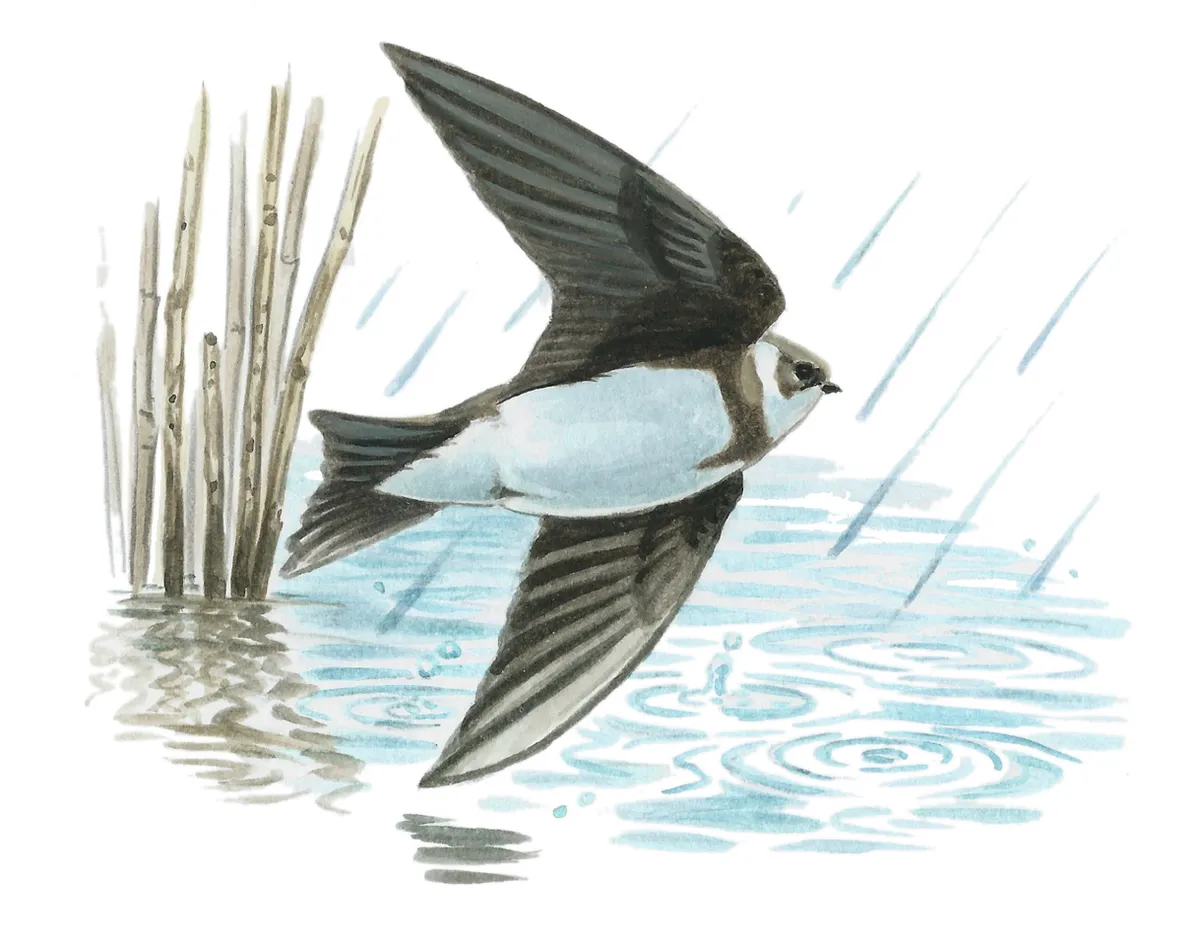
Migrant; early March. Lakes, gravel pits and rivers. Our smallest ‘swallow’, brown above with brown breast band.
Little ringed plover (Charadrius dubius)
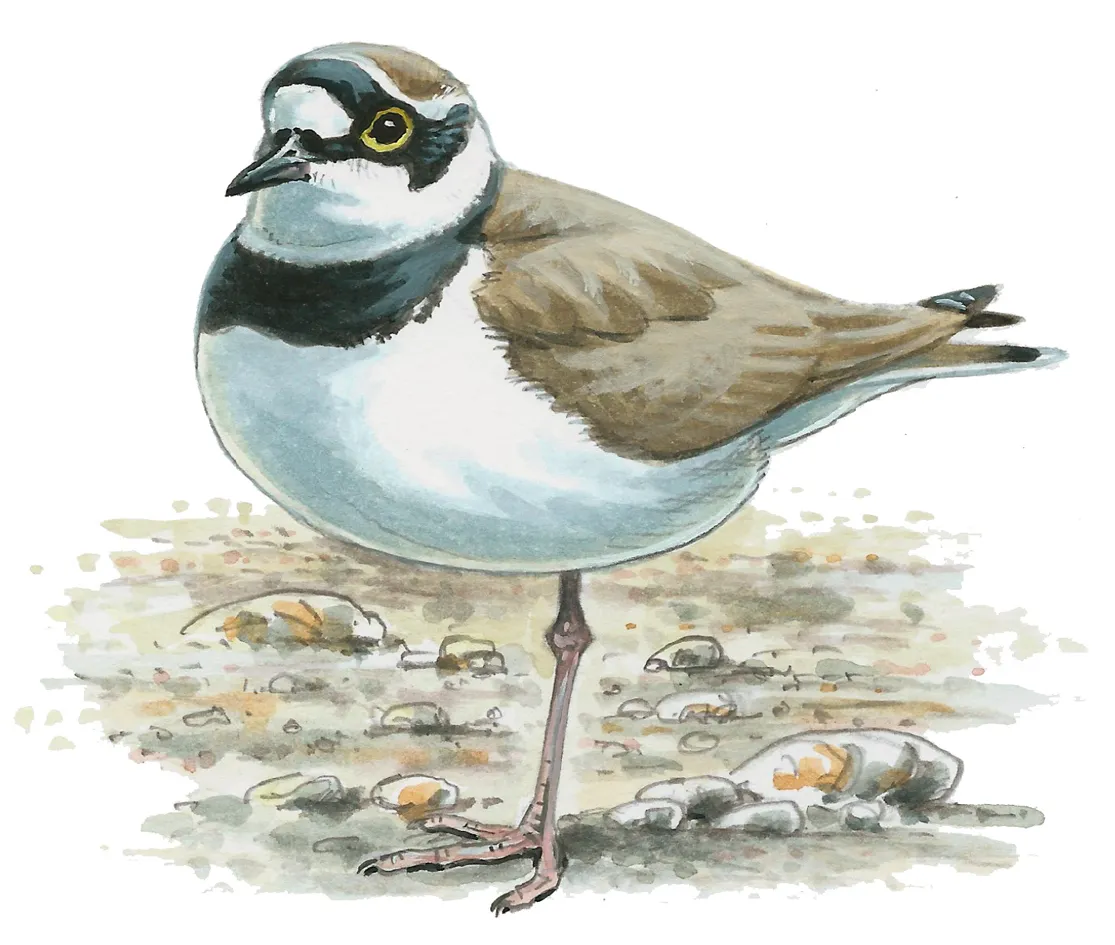
Migrant; mid-March onwards. Gravel pits and brownfield sites with pebbly areas. Neat plover with pale eye-ring.
Chiffchaff (Phylloscopus collybita)
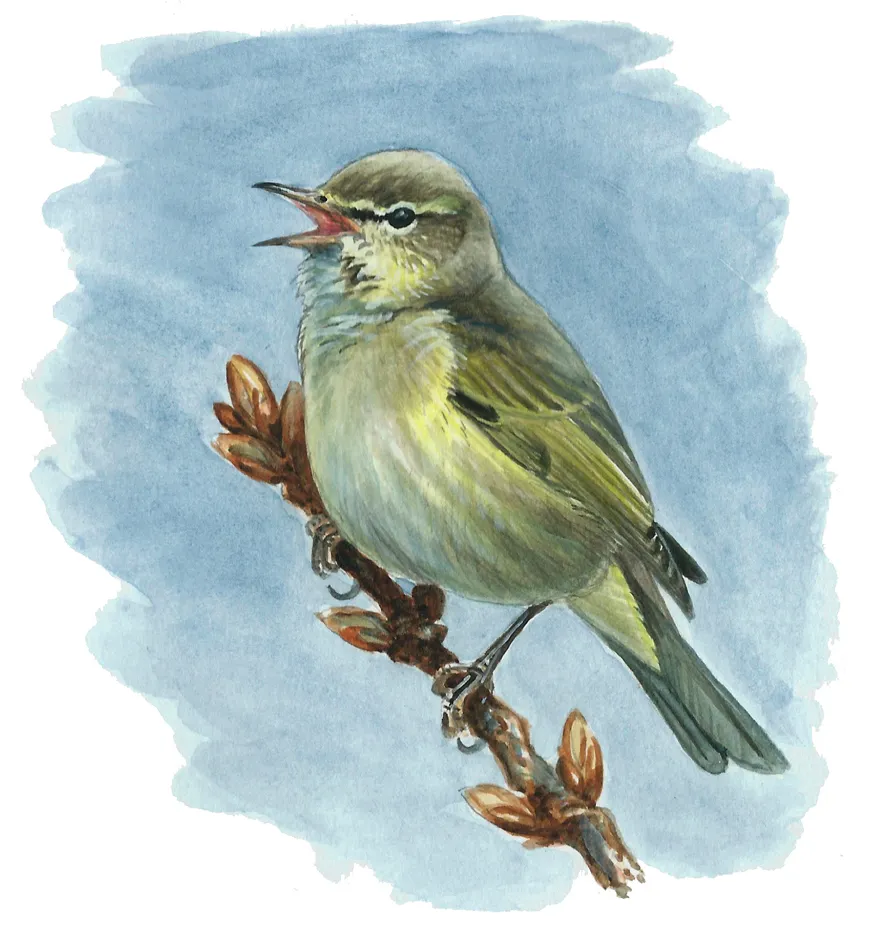
Migrants arrive early March; some birds also overwinter. Woods and scrub. Paler legs than willow warbler.
Garganey (Anas querquedula)

Migrant; mid-March onwards. Lakes, shallow pools and floods. Male has white eyestripe; female is like teal.
Redshank (Tringa totanus)

Resident; heads inland to uplands and wet meadows. Wader with bright orange-red legs and white rump.
Wheatear (Oenanthe oenanthe)
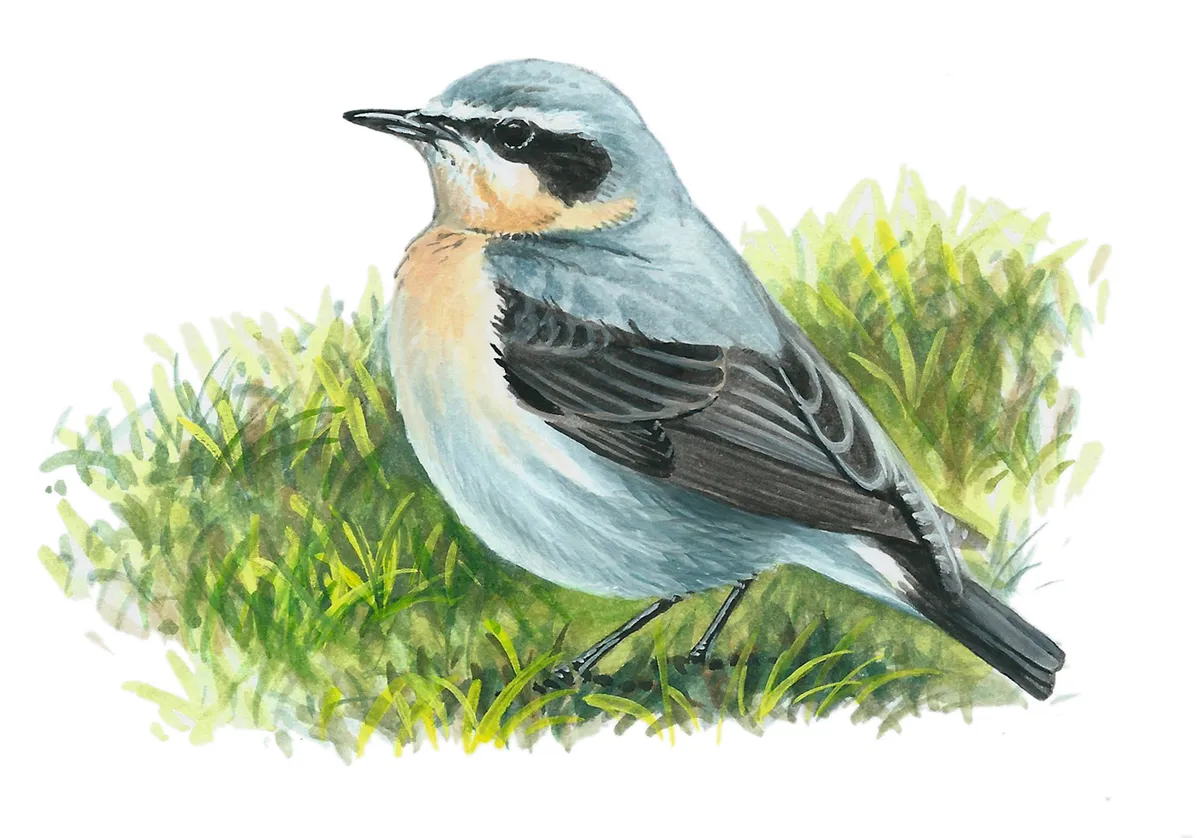
Migrant; early March. Areas of short turf, especially by coast. Male has dark mask and grey back; female sandier.
Curlew (Numenius arquata)

Resident; moves inland to moors and boggy uplands. Our largest wader, with long, curved bill and white rump.
Ring ouzel (Turdus torquatus)

Migrant; from late March. Appears on rough grassland, especially on hilltops. Like blackbird, with pale bib.
Meadow pipit (Anthus pratensis)
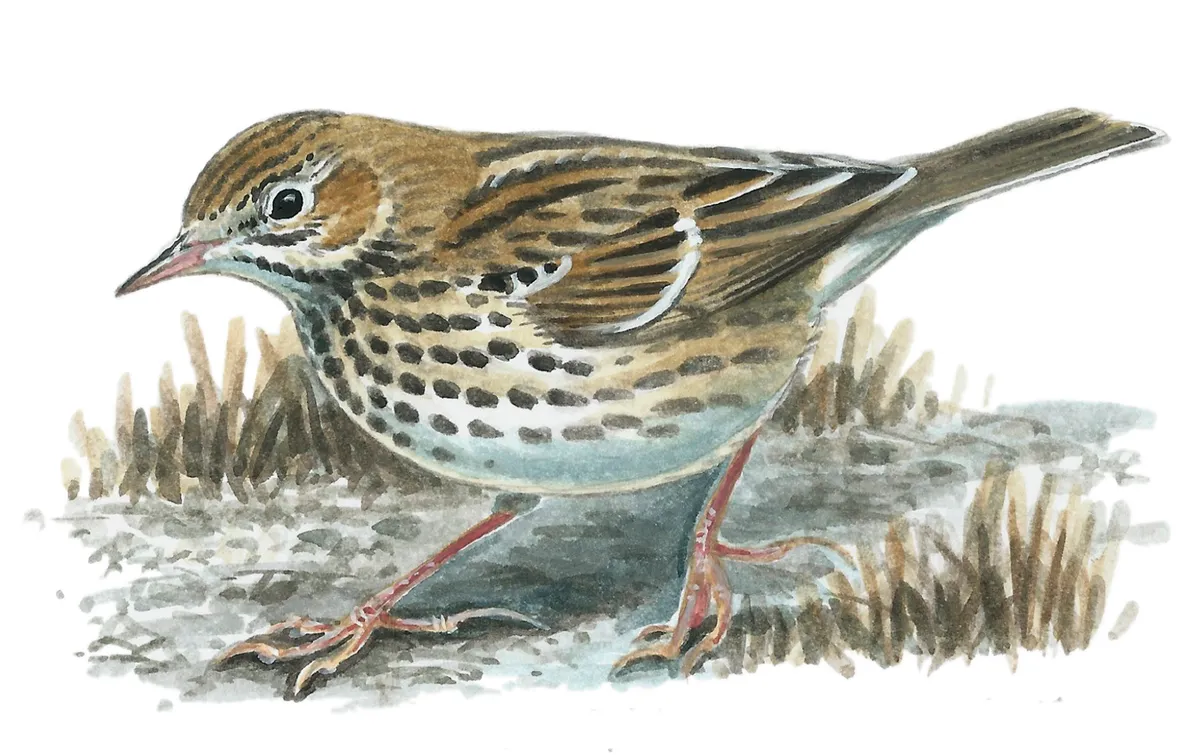
Resident; heads inland to uplands and moors. Streaky brown bird with jerky gait. Often gives ‘seep’ calls in flight.
Golden plover (Pluvialis apricaria)
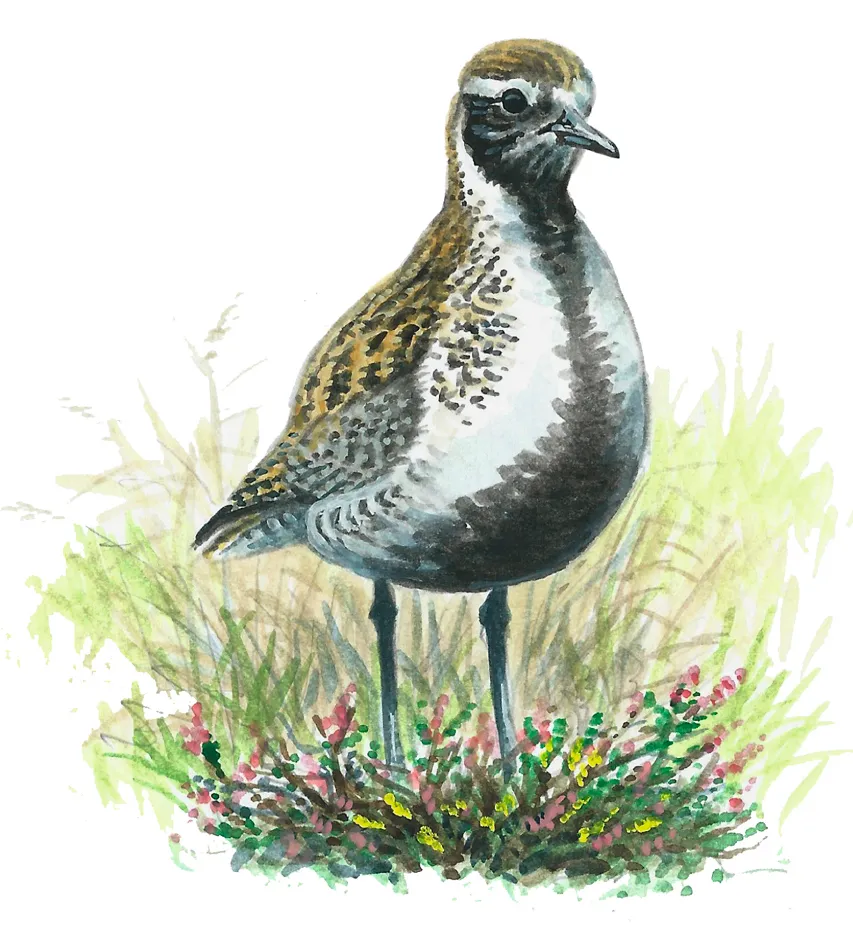
Resident; returns to breed on boggy moors. Golden-brown above, paler below; in spring acquires black belly.
Sandwich tern (Sterna sandvicensis)
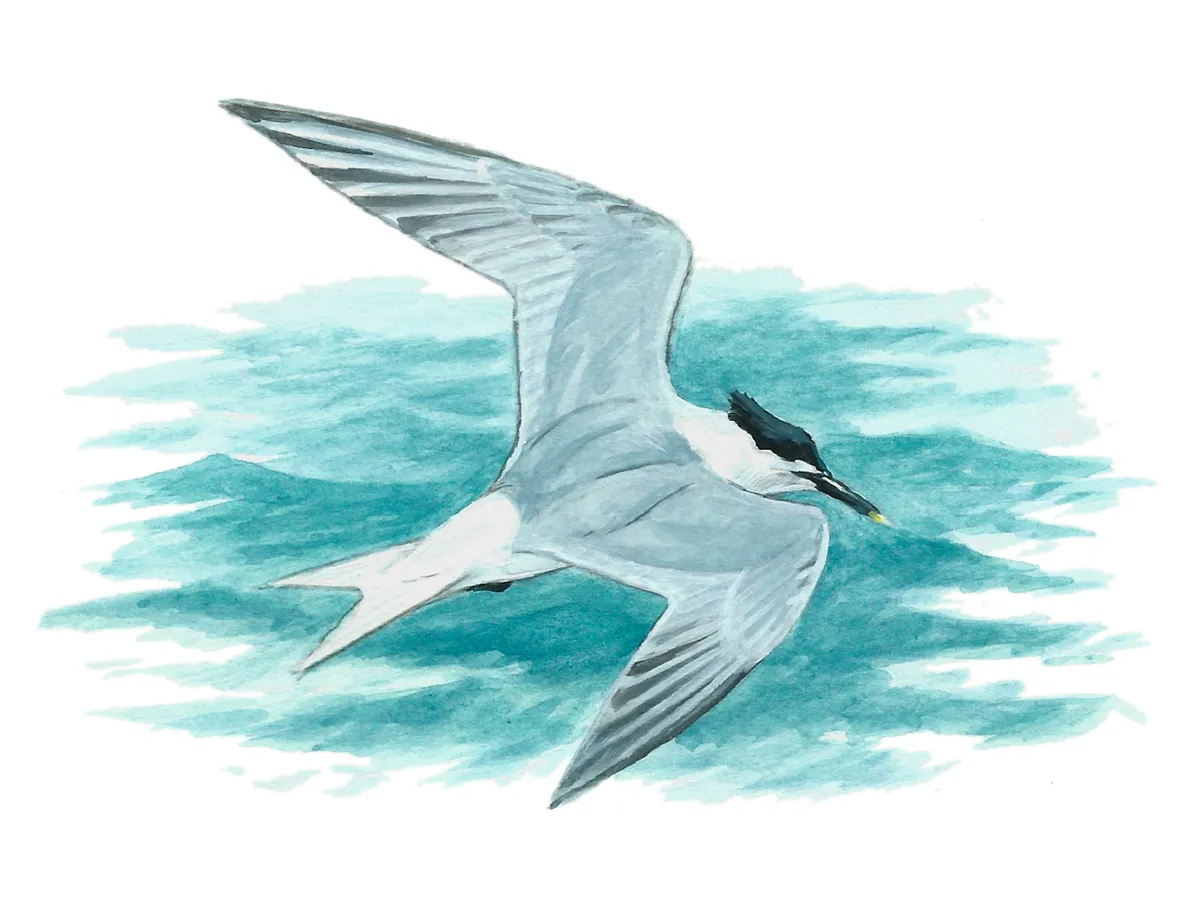
Migrant; mid-March onwards. Most records are along sandy coasts. Our largest tern, with shaggy black crest.
Oystercatcher (Haematopus ostralegus)
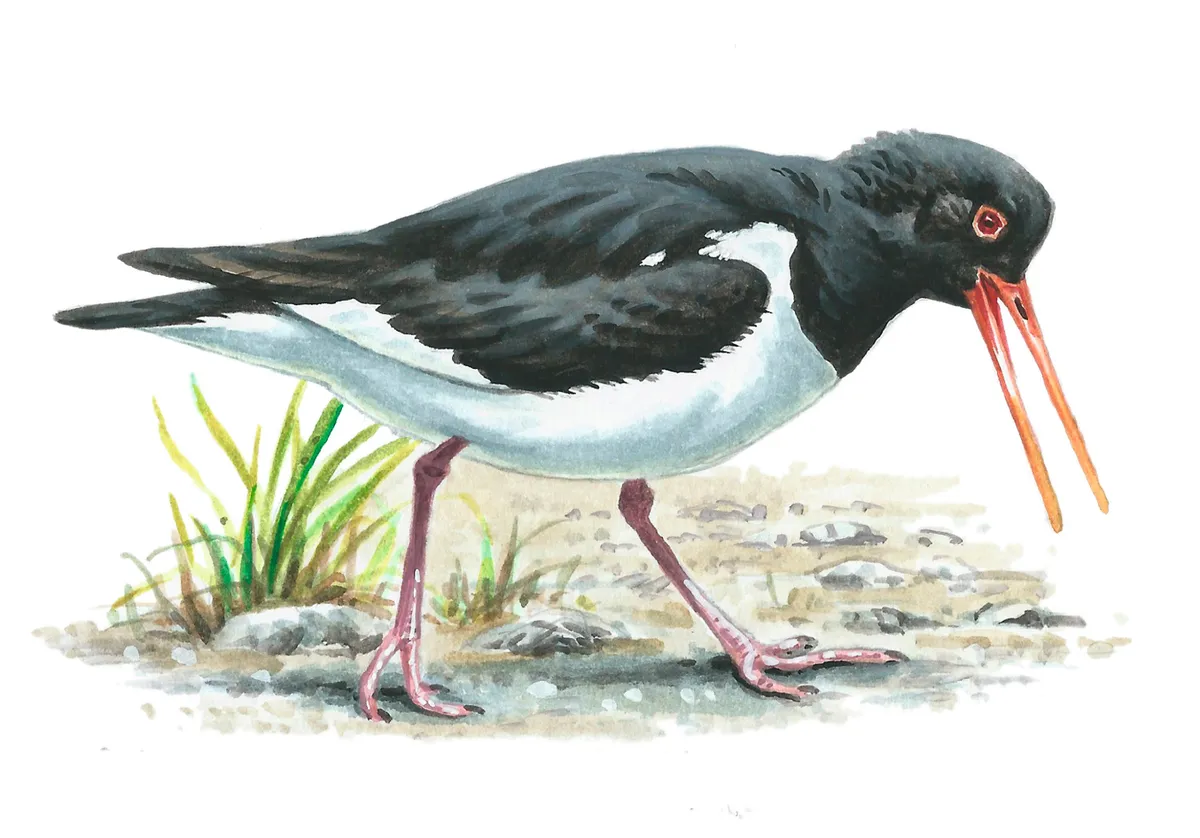
Resident; moves to uplands and inland rivers. Stocky, black and white wader with orange bill. Often gives ‘kleep’ calls.
Main image: Male wheatear in Gloucestershire. © Tim Graham/Getty
This article originally appeared in BBC Wildlife Magazine. Take a look inside the current issue and find out how to subscribe.